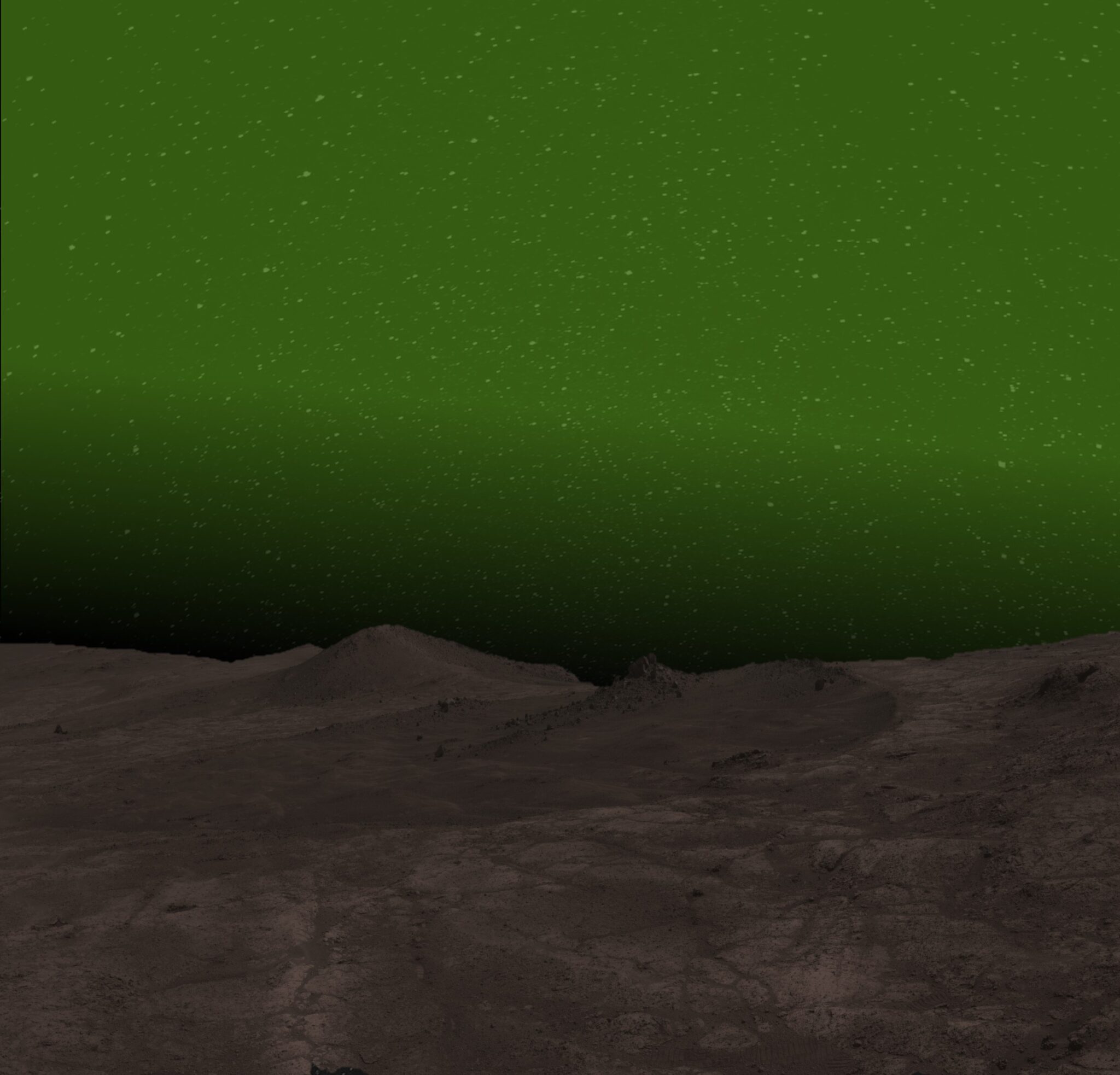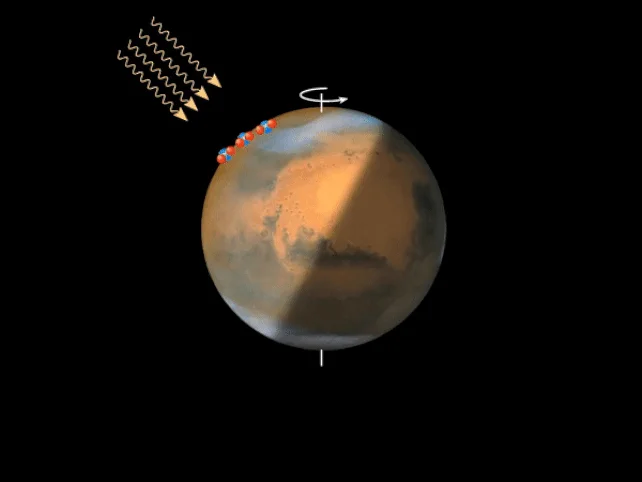For the first time, a soft green glow visible to the human eye was detected in the night sky of Mars. The European Space Agency’s Trace Gas Orbiter noticed this phenomenon from near-Martian orbit, detecting light radiation in the optical range of the spectrum. The light turned out to be especially bright in the polar regions of the Red Planet.

Phenomenon of the night glow of the atmosphere
Night glow is a common phenomenon in the atmospheres of the planets of the Solar System. During the day, sunlight splits gas molecules during the photodissociation process. Above the night side, in the absence of solar radiation, free atoms can recombine into molecules, while releasing their excess energy in the form of photons. On Earth, the night lights have green, golden and reddish shades. On other planets it looks less impressive. For example, on Venus it is infrared, on Jupiter it is ultraviolet.

Infrared and ultraviolet night lights have previously been observed on Mars. Scientists have even seen daylight there caused by atmospheric absorption and release of solar radiation energy. But the glow in the visible spectrum was noticed for the first time. It was discovered by scientists at the University of Liege while studying data from the Trace Gas Orbiter probe (part of the ExoMars mission). It occurs at altitudes of 40-60 km during the Martian winter near the South Pole.

This glow occurs as a result of the combination of oxygen atoms transferred from the illuminated Martian hemisphere into singlet molecular oxygen (O₂) emitting light. Its discovery will help to better understand the atmospheric chemistry and circulation of Mars.
Benefits of discovery for science
The discovery of night glow in the visible range entails several interesting scientific conclusions. All types of atmospheric light are indicators of certain processes occurring in the gas envelope of the planet. Mars has a very thin atmosphere, and it is very important for scientists to understand why and when it became so.
Also, the glow will help us find out which worlds outside the Solar System may be habitable, and which will not be very hospitable for humanity.
You can read more about the discovery in Nature Astronomy.
Earlier we reported how Perseverance noticed an “impossible” atmospheric effect on Mars.
According to sciencealert.com
Follow us on Twitter to get the most interesting space news in time
https://twitter.com/ust_magazine

